CDU Revision double eyelid surgery which corrects the fundamentals.
Double eyelid revision surgery is a quite frequently performed revisional procedure. Even when the initial surgery achieves the best result, patients may experience dissatisfaction, functional problems, scarring, or unnatural eye shapes. The failure of plastic surgery may lead to social phobia.
The right timing for revision eye surgery is after six months following the first surgery. In some cases, early correction is possible, but it is better to have enough time for the tissues in the surgical areas to heal completely.
In revision cases, because unexpected situations can arise and many complicated tasks may need to be completed, the revision surgery must be performed by experienced and specialized surgeons.
Cause
We make an accurate analysis of height, depth, strength, and adhesion
Planning
We ensure we have full understanding in advance of the causes of the current issue, and of further problems which may be caused by revision surgery.
Proceeding
Following the personalized plan, an eye surgery specialist, who is a senior surgeon with extensive experience of different surgical cases, will proceed with the revision surgeries.
Surgery Duration
60 - 90 min
Hospitalization
No
Stitches Removal
After 3-7 Days
Anesthesia
Local and Sedation
Recovery Period
7 Days
Revision double eyelid surgery cases

The height of double folds is too high
Causes
- During the surgery, the double eyelid line is created at a position which is too high.
- Too much skin is removed.
- The adhesion is formed at a position which is too high.
- Ptosis is not properly corrected.
- There is excess skin under the double eyelid line.
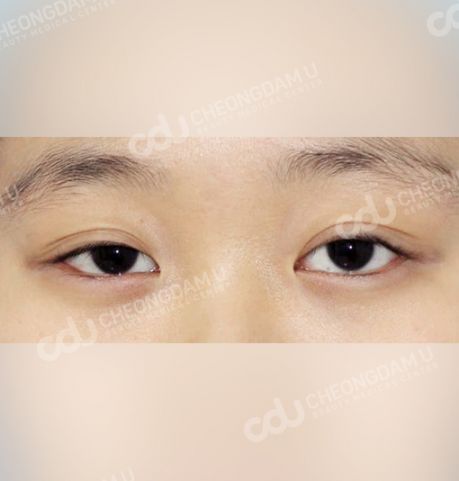
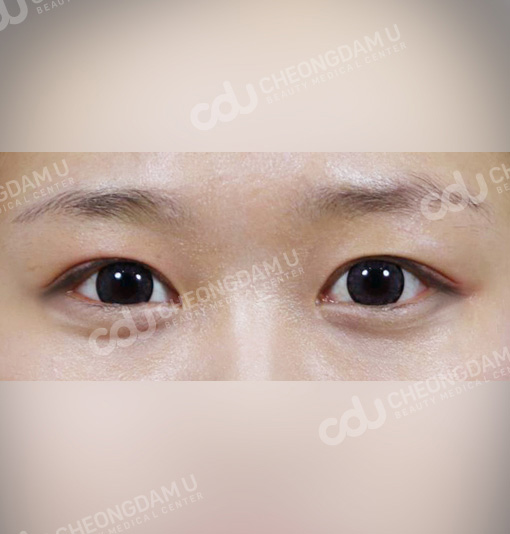
Issue
- The appearance is not natural on Asian eyes.
- It is noticeable that the patient has had eye surgery.
- The eyes look sleepy.
- The double folds can be too thick and unnatural.
- The expression can be too strong.
- Severe scarring.
Solutions
Making lower double folds by removing the previous scar:
When the eyes have enough skin, smaller double folds are made below the previous double eyelid lines by removing the scar tissue and scarring and releasing the previous folds.
Making lower double folds without removing the previous scar:
When the eyes don’t have enough skin, the previous scar is maintained. Only the folds previously operated on are released and new double eyelid lines are created below the previous lines.
Ptosis correction:
When the eyes have ptosis or ptosis is not corrected properly during the previous surgery, the double eyelid lines are created at a higher position than intended. By correcting ptosis, the double folds become defined and natural.
The fold is almost invisible or too natural
Causes
- During the first surgery, the double eyelid lines are originally designed to be small.
- The post-surgery folds disappear over time.
- Due to the aging process, the skin on the upper eyelids or the eyebrows sags.
- Not enough skin is removed during surgery.
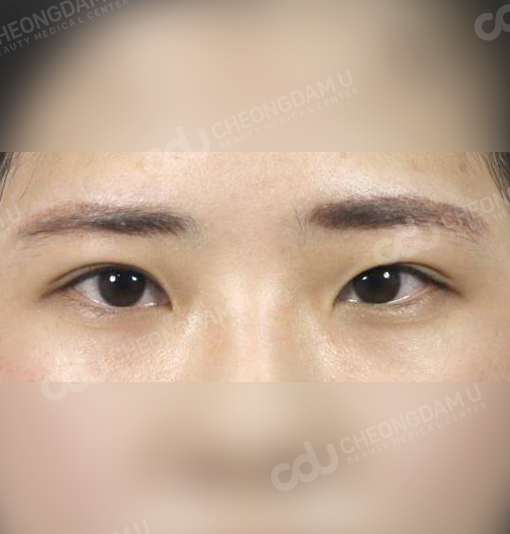
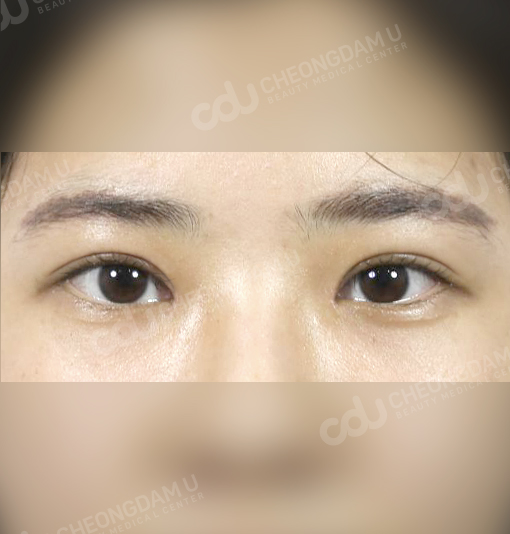
Issue
- Too subtle a change after surgery.
- The eyes seem droopy.
Solutions
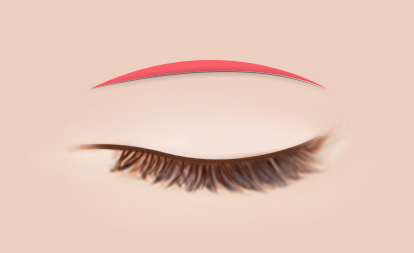
The double folds are too deeply made
Causes
- When the double eyelid lines are set at a higher position than they are supposed to be, the double folds remain unnatural even after several years.
- Not enough skin is removed above the double eyelid line.


Issue
- The double folds look too strong and unnatural.
- The eyelashes are turned inside out.
- The eyes become dry.
- The eyes feel very tight and unnatural when opening the eyes.
- Skin above the double folds is puffy.
Solutions
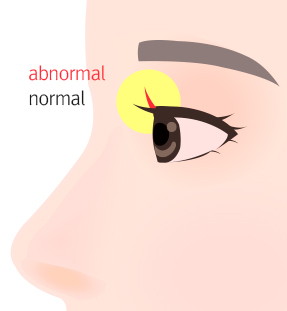
The folds are too shallow or disappear
Causes
- Thick and puffy skin.
- Eyes with ptosis.
- The original double folds are subtle and low.
- Eyes with strong Mongolian folds.
- Eyes with severe astigmatism.
- Sunken upper eyelids.
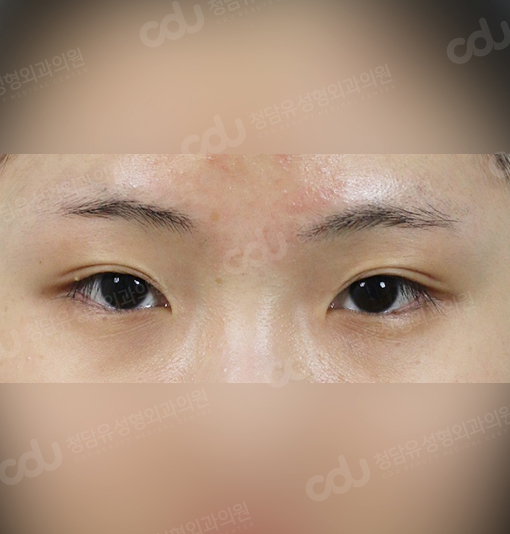
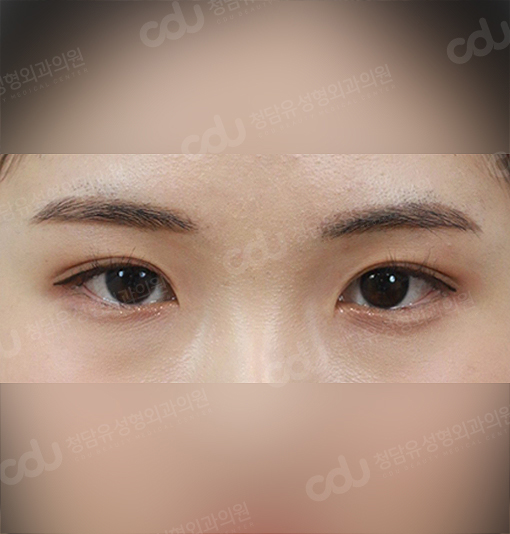
Solutions
Multiple folds
Causes
- Multiple folds before any surgery: When the amount of fat above the double eyelid line decreases, the double folds appear like wrinkles.
- Multiple folds after double eyelid surgery: When too much fat or muscle above the intended double eyelid line is removed, multiple double folds appear. Alternatively, when surgeries to lower high double folds or weaken strong double folds are performed, multiple double folds can appear. Therefore, specific action should be taken for prevention during surgery.
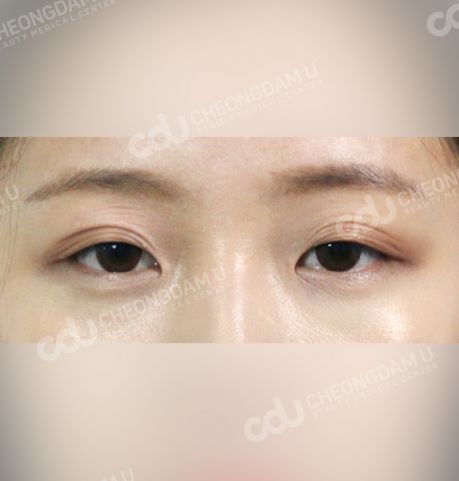

Solutions
Asymmetry
Causes
- Due to ptosis, each eye opens differently.
- The size of the eyes is different.
- The level of the eyebrows is different.
- During surgery, the design, where double folds are fixed, and the amount of tissue removed are performed too differently.
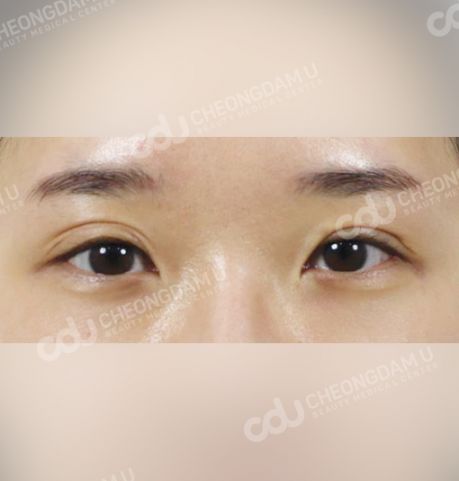
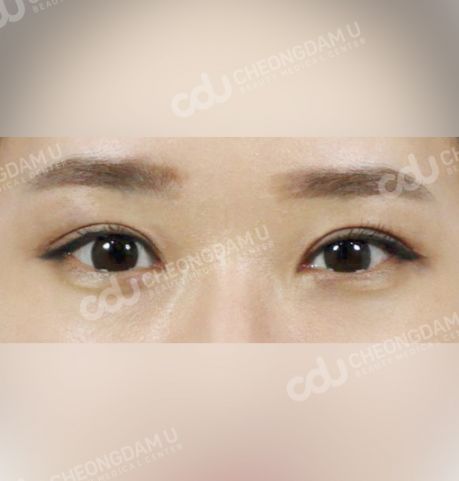
Solutions
Due to ptosis:
Ptosis correction is performed.
Due to different amount of sagging skin:
Different amounts of skin are removed. The height of the double eyelid line needs to be maintained at the same level on each eye.
Different level of eyebrows:
This happens when patients have a habit of opening their eyes using their eyebrows. Normally, this disappears after surgery, but if they still have the same issue, correction surgery needs to be performed after sufficient follow up with your surgeon.
Due to previous surgery:
Figure out the cause of asymmetry and correct the issue.
Q&A about Revision Eye Surgery

After surgery, it takes about six months to one year until all the swelling is gone and the tissues are healed completely. Generally, revision surgery is better performed after seeing the final result.
In some cases, depending on the condition, early correction is available – normally when the wound color changes from reddish to skin tone, or asymmetry is too obvious.
No, it doesn’t. For example, when the primary surgery used a non-incisional method and if the double folds disappear, the double folds can be recreated using a non-incisional method. In the case of revision surgery after primary surgery using an incisional method, a non-incisional method can be used if there is no need to remove more skin.
If the scar is not severe the scar can be flattened with laser treatment. In other cases, if the eyes have excess skin, the previous scar can be removed. If there is no excess skin, the scar can’t be removed. However, the scar is more visible due to adhesion around the scar. By releasing the scar tissue and adhesion, the scar can become flatter and improved. Alternatively, the scar can be hidden by lowering the height of the double fold line.

